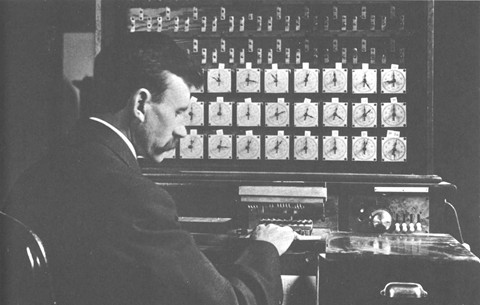 With next year’s Census already sparking so much political heat, it’s worth looking back at one of Microkhan’s favorite-ever technology stories: the 1890 Census, the tabulation fiesta that have birth to (semi-)modern programming.
With next year’s Census already sparking so much political heat, it’s worth looking back at one of Microkhan’s favorite-ever technology stories: the 1890 Census, the tabulation fiesta that have birth to (semi-)modern programming.
For the hardcore geeks in the audience, this is already a well-known tale, featuring one of the true rock stars of the field: Herman Hollerith, best known as one of the fathers of IBM. The quickie version of his 1890 genius goes like so:
After receiving his Engineer of Mines (EM) degree at age 19, Hollerith worked on the 1880 US census, a laborious and error-prone operation that cried out for mechanization. After some initial trials with paper tape, he settled on punched cards (pioneered in the Jacquard loom) to record information, and designed special equipment — a tabulator and sorter — to tally the results. His designs won the competition for the 1890 US census, chosen for their ability to count combined facts. These machines reduced a ten-year job to three months (different sources give different numbers, ranging from six weeks to three years), saved the 1890 taxpayers five million dollars, and earned him an 1890 Columbia PhD. This was the first wholly successful information processing system to replace pen and paper. Hollerith’s machines were also used for censuses in Russia, Austria, Canada, France, Norway, Puerto Rico, Cuba, and the Philippines, and again in the US census of 1900.
Hollerith’s original patent for the tabulation system, granted in 1889, can be found here. He would go on to modify his flagship tabulator in 1906, creating this monstrous bad boy—the first machine of its type that could be tweaked to perform different functions without having to be rebuilt—in other words, he made it programmable.
Much more on the history of Census tabulation machinery here. We particularly love the gargantuan FOSDIC.


Like gas stations in rural Texas after 10 pm, comments are closed.